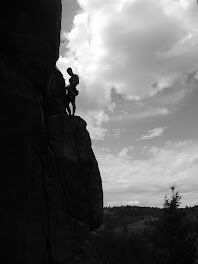earner centered/ The Edgeless University “perfect storm”
The authors of The Edgeless University assert that universities are facing times like no other, the define this as the “perfect storm” a time in which universities “are to offer more varied provision to a growing number of students in an era when they can no longer depend on ever-increasing allocation of funds.” (retrieved from http://www.demos.co.uk/files/Edgeless_University_-_web.pdf?1245715615 page 15). Colleges and universities will not remain unscathed by the changes and challenges they face in the current economy. Like any other entity they will have to innovate and change, some of these changes will be more drastic than for others.
Further challenges beyond funding and increased student demand may also include unprecedented numbers of retirements by faculty and staff further changes will be driven by innovations in technology.
In order to provide online delivery of educational content to students as economically as possible universities may move to accessing free Web 2.0 tools and integrating them into their learning management system or in place of a learning management system. As it is noted in The Edgeless University ..
“Open repositories of online content, social media networks like Facebook and the use of virtual learning can all help universities provide more flexibility and new ways for people to access scholarly and research material. Open repositories of online content, social media networks like Facebook and the use of virtual learning can all help universities provide more flexibility and new ways for people to access scholarly and research material.”
Further initiatives include designing the learner centered/student centered university. These terms maybe defined as:
Learner centered: to refer to environments that pay careful attention to the knowledge, skills, attitudes, and beliefs that learners bring to the educational setting. (retrieved from http://cndls.georgetown.edu/crossroads/vkp/resources/glossary/learnercentered.htm, July 23, 2009)
Learner-centered education places the student at the center of education. It begins with understanding the educational contexts from which a student comes. (retrieved from http://www.abor.asu.edu/4_special_programs/lce/afc-defined_lce.htm, July 23, 2009)
Examples of learner-centered educational practices from the University of Arizona include, but are not limited to:
• Collaborative group learning, both inside and outside the classroom;
• Individual student research and discovery;
• Research and discovery by students and faculty together;
• Problem-based inquiry learning;
• Student-faculty studio and performance activities;
• Asynchronous distance learning;
• Synchronous interactive distance learning;
• Service learning activities;
• Hands-on, experiential learning activities;
• On-site field experiences;
• Self-paced tutorials. (retrieved from http://www.abor.asu.edu/4_special_programs/lce/afc-defined_lce.htm, July 23, 2009)
From Maricopa Community College:
The learning college is based on six key principles:
• The learning college creates substantive change in individual learners.
• The learning college engages learners as full partners in the learning process, with learners assuming primary responsibility for their own choices.
• The learning college creates and offers as many options for learning as possible.
• The learning college assists learners to form and participate in collaborative learning activities.
• The learning college defines the roles of learning facilitators by the needs of the learners.
• The learning college and its learning facilitators succeed only when improved and expanded learning can be documented for its learners. (retrieved from http://glory.gc.maricopa.edu/~mdesoto/weblearn/index.htm; July 23, 2009)
• Instruction changes from being teacher-centered and content-driven, and becomes more learner-centered and learning process-driven.
• The student’s role changes from that of being a passive recipient or empty receptacle into which the instructor “deposits” knowledge—the “banking theory” of education (Freire, 1970)—to that of an engaged learner and active agent in the learning process.
• The instructor’s role expands from that of a knowledge-laden professor who professes truths and disseminates factual information, to that of being a learning mediator or facilitator who assumes the following roles. (retrieved from http://www.oncourseworkshop.com/Miscellaneous018.htm, July 23, 2009)
Weimer outlines the key premises of learner-centered teaching as:
• Assume that students are capable learners who will blossom as power shifts to a more egalitarian classroom.
• Use content not as a collection of isolated facts, but as a way for students to critically think about the big questions in the field.
• Change the role of teacher from sole authoritarian to fellow traveler in search of knowledge.
• Return the responsibility for learning to the students, so that they can understand their learning strengths and weaknesses and feel self-directed in their knowledge quest.
• Utilize assessment measures not just to assign grades, but as our most effective tools to promote learning. (retrieved from http://www.insightjournal.net/Volume3/StudentPerceptionsLearnerCenteredTeaching.pdf, July 23, 2009)
Woven through these observations and definitions is the use of technology to strengthen the relationship between student and institution, student with other students, student and faculty. Technology, which engages learners, can be used to build relationships.
Steampunk Adventures back from a real life interruption!
-
Hello everyone, I can’t believe that I have not posted anything here since
June of 2011! So much has happened in the past several months..real life
has ce...
14 years ago


